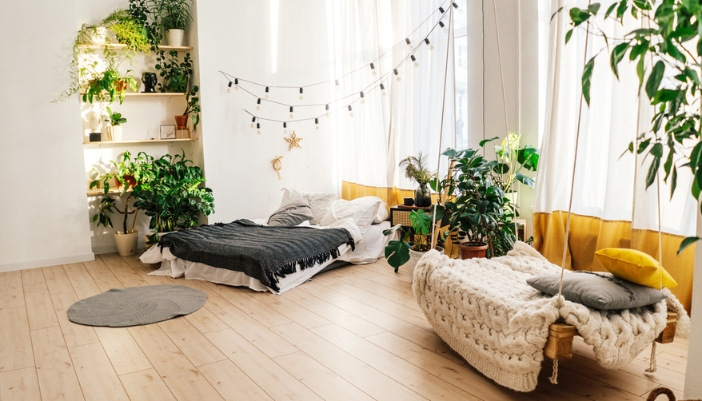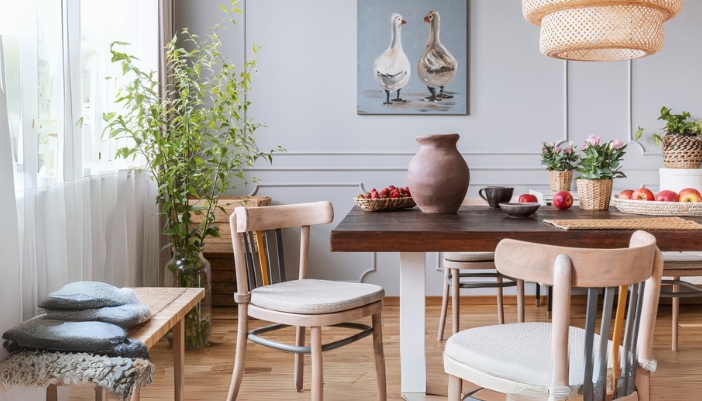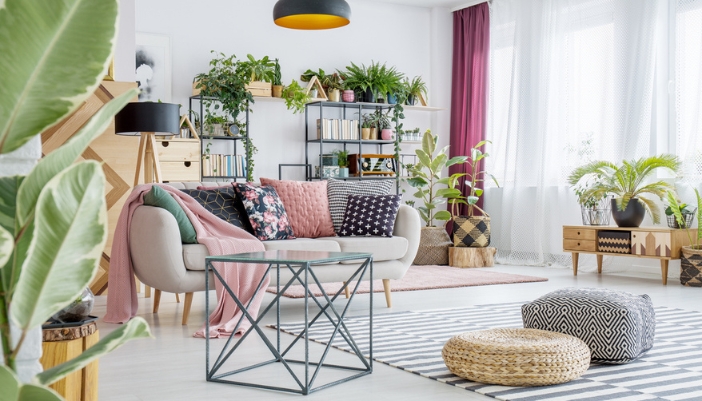Imagine waking up in a room bathed in soft, natural light, the air fresh with the scent of greenery, and the materials around you whispering tales of the earth. This isn't a dreamy escape in the countryside; it's what your home could feel like every day with biophilic design. At Sav-Mart, we believe your living space isn't just a place to reside but a sanctuary that nurtures your well-being. Join us as we explore how simple it can be to weave biophilic design principles into the fabric of your daily living, making each moment at home a more enriching experience.

Understanding Biophilic Design
Biophilic (meaning "love of nature") design is a creative approach to strengthening the connection between nature and manufactured environments, enhancing our overall well-being. Biologist Edward O. Wilson popularized this concept in the 1980s, highlighting our innate need to connect with natural processes. This need is rooted in our evolutionary history, primarily spent in natural settings rather than modern, artificial environments. Over the years, architects and designers have increasingly embraced this philosophy, incorporating natural lighting, vegetation, and organic materials into living spaces to echo the natural world.
Integrating natural elements into our homes brings numerous mental and physical health advantages:
- Stress Reduction: Natural settings and elements can significantly lower stress levels.
- Improved Creativity and Clarity: Nature can enhance cognitive functions and foster clearer thinking.
- Enhanced Well-being: Regular exposure to natural environments has been linked to overall improvements in mood and health.
- Faster Healing: Studies suggest that patients in environments with natural elements tend to recover faster.
- Air Quality: Plants in indoor spaces can improve air quality, which is beneficial for respiratory health.

Core Elements of Biophilic Design
Biophilic design is grounded in critical elements that draw the natural world closer to our everyday living environments. Here's how you can harness these elements to create a home that looks beautiful and feels vibrant and alive.
- Natural Light: Enhance natural light by using light-colored curtains, positioning furniture to avoid blocking windows, and considering the installation of skylights or more oversized windows in darker rooms.
- Plants and Greenery: Add plants to purify the air and introduce vibrant life into your decor. Opt for a mix of indoor-friendly plants like ferns, snake plants, and pothos, and use creative placements like corners, hanging planters, or wall-mounted setups.
- Natural Materials: Incorporate wood, stone, and natural fibers (wool, cotton, linen) in furniture, accents, and textiles to evoke the natural world and add texture to your spaces.
- Water Features: Include small tabletop fountains or wall-mounted water features to bring water's calming sound and visual appeal into your home.
- Color Palettes: To create a soothing atmosphere, choose colors that mirror the natural environment, such as earth tones and natural hues like greens, blues, and browns.

Practical Applications in Home Decor
Transforming your home into a biophilic sanctuary is a journey that should be both enjoyable and simple. Here's how we recommend bringing the essence of nature into each room, creating spaces that nurture well-being:
- Living Room: Arrange furniture and window treatments to let in plenty of natural light. Add greenery with large plants and choose decor made of wood and stone. A minor water feature can introduce a tranquil sound.
- Bedroom: To create a calming retreat, opt for bedding and curtains made from natural fabrics. Plants that improve air quality can also help you unwind. Decorate with colors that mimic the tranquility of nature.
- Kitchen and Dining Area: Wooden furniture can bring an earthy, robust feel. Herbs on the windowsill serve dual purposes as decor and culinary essentials. Stone countertops or backsplashes add texture and a natural touch.
- Home Office: Make sure your work area is well-lit with natural light. Desk plants or a small indoor garden can boost your mood and productivity. For comfort and style, incorporate accessories made from bamboo or a soft woolen rug.

Challenges and Considerations
While the allure of biophilic design is undeniable, incorporating it into your home might come with its own set of hurdles. However, don't let these challenges deter you. Here's how to navigate some common obstacles:
- Space Limitations: Not everyone has the luxury of large, open spaces, but you can still adopt biophilic design. Opt for vertical gardens, floating shelves for plants, and mirrors to reflect natural light, making the area appear more prominent.
- Maintenance: Keeping plants alive and well can seem daunting. Choose low-maintenance indoor plants like succulents or snake plants that require minimal care. For water features, opt for self-contained systems that recirculate water and are easy to clean.
- Allergies: Natural elements, especially plants, can sometimes exacerbate allergies. Look for hypoallergenic plants and ensure proper ventilation when incorporating natural materials prone to mold or dust.
With thoughtful planning and intelligent choices, these challenges can be addressed, allowing you to enjoy the benefits of biophilic design in your home without the downsides. Each small step towards integrating nature into your living spaces can significantly impact your well-being and happiness.
Embrace Nature's Tranquility in Your Space
Embarking on the journey to transform your home with elements of biophilic design is an adventure that promises aesthetic enhancement and a profound impact on your well-being. Whether it's the calming presence of plants, the grounding effect of natural materials, or the rejuvenating power of natural light, each element you integrate brings you closer to nature's serenity.
Are you looking to bring these ideas to life? Stop in and explore our furniture collection at Sav-Mart to find everything you need to infuse your home with the beauty and tranquility of biophilic design!